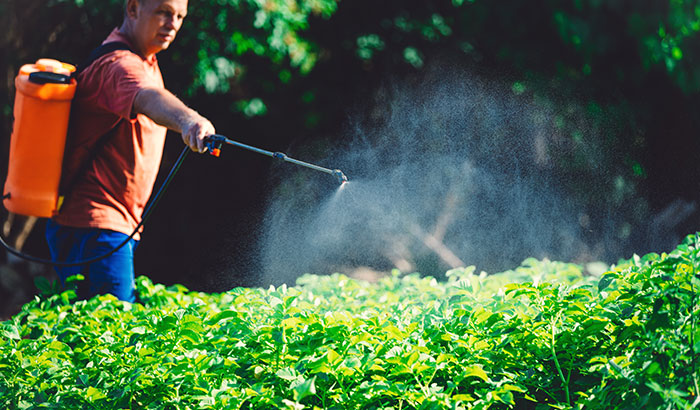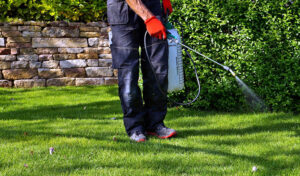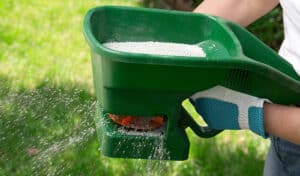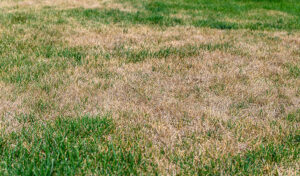With another growing season around the corner, you must understand the risks and restraints of spraying pesticides inside or around your home.
Although pesticides are an excellent way to eradicate pesky bugs from your property, they have the potential to cause harm if they’re not stored or used properly. It’s important to educate yourself about the best practices before using any indoor or outdoor pesticide.
Today, we’re sharing our best tips for spraying pesticides so you can use them safely and effectively this growing season.
Calibrate the Sprayer
Calibration is one of the most important tips when it comes to spraying pesticides, although it’s commonly overlooked. Before you use your pesticide sprayer, it must be properly calibrated. Calibration is the process of measuring and adjusting the amount of pesticide you need for a specific area. This step ensures that you’re using an adequate amount of chemicals.
Using too much or not enough pesticide will inhibit your desired results. When calibrating the sprayer, use water so you are not handling too many chemicals. Calibration will need to be repeated multiple times, depending on the size of the area or if there are different ground conditions in certain spots.
Proper Nozzle Selection
After you have calibrated the sprayer, make sure you are using the proper nozzle. How the chemical is dispersed is just as important as the amount of pesticide that is used. Before you use a specific nozzle, check to see if it can cover the target area with one use or if areas need to be overlapped.
Next, become familiar with the boom height of the nozzle. Boom height refers to how far you position the sprayer above the target. This ensures that you are getting a proper overlap with the nozzle.
Clogging is another factor that can affect the nozzle. If a nozzle is clogged, it can drastically change the spray pattern and the flow rate. To unclog a sprayer, soak it in a water and vinegar solution to loosen up the obstruction. Never use a knife or any other sharp, metal object to unclog a nozzle.
Prepare Backup Materials
Preparation is a simple tip that can save you a lot of time on a project. Carry extra nozzles, washers, and any other parts that you are using for the project with you. If pieces of equipment break and you end up in need of unprecedented repairs, backup equipment can help you fix the problem quickly.
Pay Attention to Spray Pressure
You want to aim for a steady spray pressure when applying chemicals. Variations in pressure can cause changes in the application rate and spray pattern. A low spray pressure will narrow the spray angle, causing streaks of untreated areas. On the other hand, a high spray pressure can cause droplets to drift to undesired locations.
Understand Limitations
Every pesticide has restrictions and limitations. Most pesticides will disclose how much needs to be applied for them to be effective. Follow those instructions and understand that more is not always better.
Along with the appropriate amount, there are also temperature limitations. Before using any chemical, make sure it is not too hot or too cold. Also, never use pesticides when it is too hot because they can evaporate and travel to unwanted areas. The ideal air temperature for applying most pesticides is between 65- and 85-degrees Fahrenheit.
Geographical limitations are another factor that can disturb the effectiveness of the chemical. Make sure the pesticide is safe and effective to use in your area. Lastly, there are stage limitations to pesticides. Certain pesticides need to be used within a specific growth stage of the plant and the pest for it to be effective.
Mixing and Applying
You should never eat or smoke when mixing pesticides. Pesticides can travel into the food that you are eating and make you quite ill. Also, some pesticides are flammable, so avoid smoking or other flames.
While mixing, make sure you are following the instructions as close as possible. You may be tempted to double up on the amount of pesticide to improve its potency, but you are only putting yourself and others around you in danger.
When you begin mixing, make sure you are in a well-ventilated area. These powerful fumes can have an adverse effect on you without ventilation. Next, mix only the amount of pesticide that you need. It might be tempting to make more and store it for future use, but over time, the pesticides will become ineffective.
After applying the pesticides, keep children and pets away from the area. On the product label, there should be a time disclosing when it would be safe to enter the sprayed area. If there is no time listed, wait until the pesticide has dried before others enter.
If your clothes become soaked with pesticides, remove the clothing immediately and dispose of them properly. Thoroughly clean any skin area that has come in contact with chemicals.
Storage
The first tip when storing pesticides is to keep them in their original container. Never put them in an unmarked container. If any product has been spilled, use sawdust or kitty litter to soak it up and then sweep it into a plastic bag.
There are two types of pesticides: indoor and outdoor. It’s important to store each product in its respective area. When storing pesticides, make sure they are away from any food product and are not easily accessed by children.
Let Summit Lawn and Pest Control Help
With Summit Lawn & Pest Control, spraying pesticides has never been easier. We have a passion for providing fast and affordable home lawn care and pest control services so you can focus on enjoying your yard instead of worrying about bugs and insects. With over 10 years of experience in the green industry, it is our mission to provide Utah County with high-quality service and affordable rates.
Reach out today to schedule your free assessment! We serve Lehi, Orem, Provo, Spanish Fork, and other cities in Utah County, Utah.







